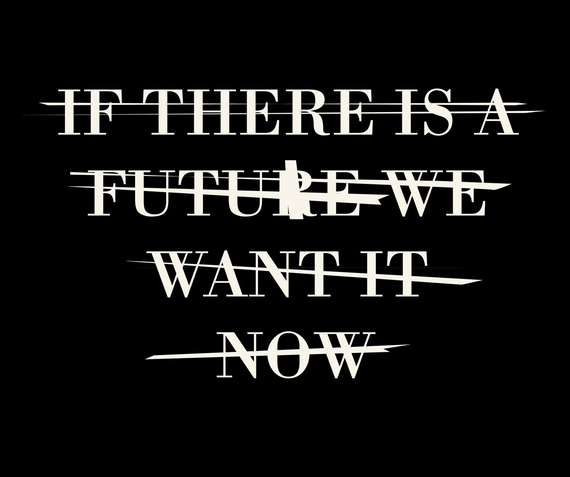Co-authored by NEERU KHOSLA, Executive Director of CK-12 Foundation.
Star Wars fans may feel ten years was a long wait for the latest update to the saga of the Jedi that started in 1977.
But ten years would have have been a short wait for educators who have been waiting almost 15 years for the latest update to the saga of federal education spending policy.
In early December, the president signed into law the Every Child Succeeds Act (ESSA) to replace No Child Left Behind (NCLB) as the reauthorization of Elementary and Secondary Education Act, a law originally enacted in 1965.
While some have likened the passage of ESSA to throwing out NCLB, in fact, the new law mostly evolves official thinking on topics like standardized testing and gives states more ownership in crafting accountability plans for how every student will succeed.
But one area with notable change is education technology.
This law contains new definitions for technology and explicit permission to spend more money on technology.
Combined with the transition to mostly block grants, the means education decision makers have much more flexibility on how to spend money on technology hardware, software, and training.
Now as advocates and community stakeholders, we must create an expectation that our states and districts invest their money with an eye toward the future.
If there's a future, we want it now
With all this permission to spend, it would be a shame if everyone keeps spending with a business-as-usual attitude that overlooks the newest options available today for various stakeholders in the education system.
Here are three ways states and districts should evolve their thinking on ed tech:
Equip students as learners
- Existing mindset. Today's student is preparing to become a productive citizen in a world that is fully connected. The solution is to purchase more devices and more internet access.
- A new view. It's not enough for the strategy to focus on the hardware and the data pipes. Instead, the spending strategy must include an answer to how learning can happen outside the confines of a classroom and the limits of the class period. With the devices in hand, districts could also choose to adopt content like CK-12, customizable textbooks that provide students on-demand opportunities to practice, or Mathspace, an app that constantly tutors students by analyzing each step of the problem solving process.
Support teachers as professionals
- Existing mindset. Technology can help teachers more easily achieve the expectations of their roles. For example, electronic gradebooks can aggregate data for faster reporting and analysis.
- A new view. While keeping records of student learning is an important aspect of being a teacher, it is a limited view of how technology can support the teacher as a professional. What about the teacher as a professional who needs to develop? Open curricula like LearnZillion provide flexibility for teachers to access examples of how to teach new content standards, and platforms like Edthena enable online video observation for teachers to analyze their teaching in collaboration with other teachers.
Empower parents as advocates
- Existing mindset. Technology systems can make it easier to share information with parents to help them support their students at school. For example, the attendance system can make an automated phone call after homeroom if a child is absent to alert for potential truancy.
- A new view. Today's technology can be so much more than a system to speed parents' ability to react to a situation. Instead, districts can choose to promote technologies that more actively involve the parents. Software like ClassDojo provides a way for parents to receive information and communicate with the teacher. And marketplaces like One Degree connect families with needed local resources like after school programs.
Today's technology is a trap
NCLB was the law of the land for nearly 15 years. This means we may be living with ESSA for the same period of time (or more).
Fifteen years is a dangerously long period of time when it comes to technology. Today's definition of technology that's labeled as game-changing could become totally obsolete very soon.
Channel One News, which launched in 1989 to bring daily newscasts to every classroom via television, became irrelevant in an age of online news via the Internet.
So for as much as the new law creates a mandate to invest more into technology, it would be misguided to become locked into today's definition of the best education technology.
A place in ESSA where this seems particularly treacherous is the callout for blended learning. A popular implementation of that idea today is a "flipped classroom" where teachers record a lecture-style video for students to watch at home so that class time can be used to problem-solve or work on projects.
Staying satisfied with this definition would be selling short the promise of blended learning.
For example, Summit Public Schools recently developed a platform that can deliver personalized learning plans for all of its students. The platform does most of the heavy lifting and data sifting for a process that otherwise required a lot of human power.
And many of the best technologies to realize the potential of blended learning are likely not yet invented.
What if advances in technology make it possible for students to access an artificially intelligent tutor at home via virtual reality which uses speech recognition to constantly adapt instruction while the student talks through balancing chemistry equations.
The above may sound crazy today, but without a willingness to constantly evolve our definition of technology deemed acceptable for investment, we might not make the right investments at the right time.
To be fair, artificial intelligence, virtual reality, nor speech recognition is itself the solution to the massive challenge of educating our youth. Nor is more computers or more software.
Good teaching is the solution. And good teaching will be amplified with use of the right technology.
Please don't mistake this as an argument to constantly upgrade our technology. It's a cautionary plea against getting stuck doing the same thing as the researchers, technologists, and educators use the next 15 years to apply even newer technology to learning.
While we don't risk the downfall of the Rebel Alliance if we fall into the trap of the status quo technology definitions, we do risk delaying access to a better education for all students.
_____________
A version of this article originally appeared on Forbes.
Adam Geller is founder and CEO of Edthena, a video platform for teacher classroom observation. Adam started in education as a science teacher in St. Louis, Mo. After leaving the classroom, he joined the national strategy team of Teach For America where he designed technology impacting teachers across the country.
Neeru Khosla is the Co-Founder and Executive Director of CK-12 Foundation, a non-profit organization which aims to provide customizable K-12 learning materials that are free for all. Mrs. Khosla also serves on the Advisory Board for the Wikimedia Foundation, the Advisory Board for DonorsChoose, and is one of the founding members of the K-12 Initiative of the d.school at Stanford University.


